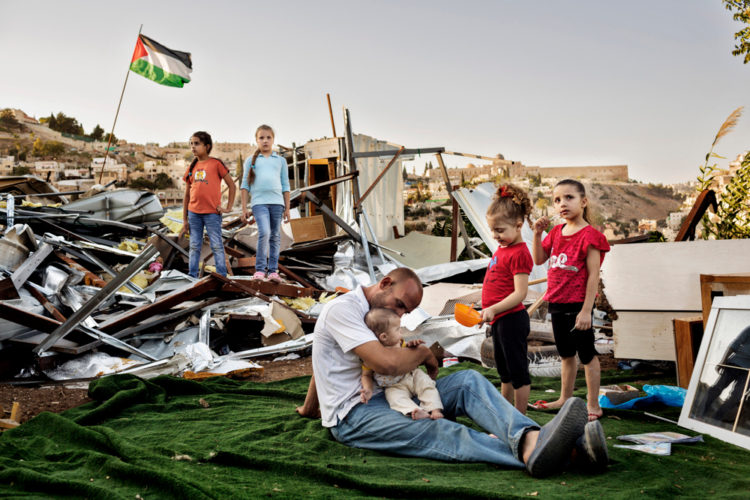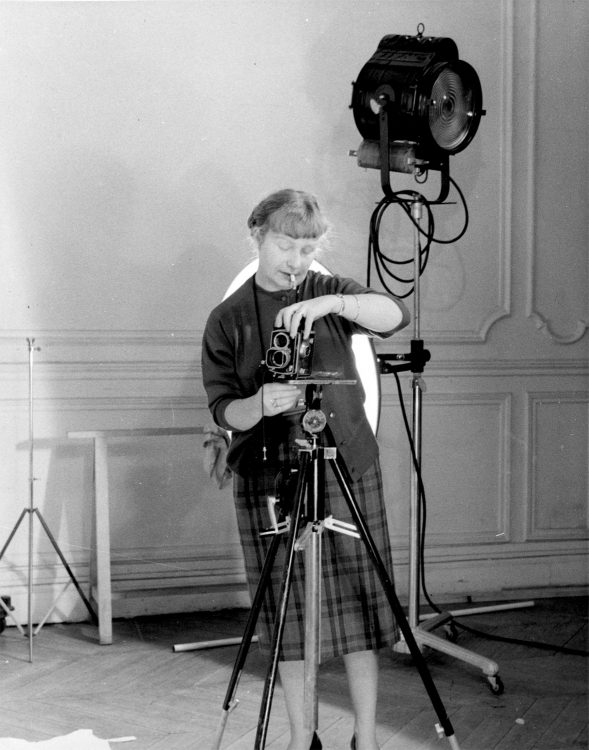Dalia Amotz
Breitberg-Semel, Sarah, Dalia Amotz: The Dark Land, Fields of Light, exh. cat., Tel Aviv Museum of Art, TelAviv (June 30–September 16, 2000), Tel Aviv, Tel-Aviv Museum of Art, 2000
→Perez, Nissan, Time Frame: A Century of Photography in the Land of Israel, exh. cat., The Israel Museum, Jerusalem (June 6–October 28, 2000), The Israel Museum, Jerusalem, January 2000
→Hirschfeld, Ariel, Jerusalem in Black and White – A Torn Memory, Rishon Le Zion, Miskal-Yediot Achronot, 1997
Dalia Amotz- The Dark Land, Tel Aviv Museum of Art, Tel Aviv, June 30–September 16, 2000
→Dalia Amotz 1938–1994, The Israel Museum, Jerusalem, February 1–28, 1995
→Dir Samit, The Little Gallery 2, Jerusalem, May 17–June 7, 1973
Israeli photographer.
Dalia Amotz was born and raised in Kibbutz Gan Shmuel. In 1962 she moved to Jerusalem. She began to engage in photography as an autodidact, after being exposed to photo printing by a member of the kibbutz.
D. Amotz began exhibiting her works in 1975. She was an active photographer until 1987. Most of her photographs deal with the local Israeli landscape. She developed a photography technique in which she made use of natural light as a means of abstracting nature. The printing process was an important and inseparable part of her work. She printed her works herself, consciously interfering with the printing process, controlling the tones, concealing, revealing, adding, cutting and engraving the surface.
During her twelve years of creation, she produced three main large series. The first consisted of photographs of Jerusalem, which were grouped in the album Jerusalem in Black and White – A Torn Memory, published in 1997, alongside texts by Israeli philosopher and writer, Ariel Hirschfeld. The second series was composed of photographs taken in the West Bank in the 1970s, after the Six-Day War. In this work, she photographed rural Palestinian sights from a romantic point of view, influenced by the romantic landscape photographers and painters who immortalised the landscape in glorification and admiration, emphasising the power of nature versus man. This was the subject of her first solo exhibition, in 1973, entitled Dir Samit at The Little Gallery 2, Jerusalem.
Between the years 1977 and 1978 she lived in the UK, where she photographed her Stonehenge series. In these two years, she broke with the romanticism and sublimity that characterised her early works. In her early work she had been influenced by the traditional American photography of wide and majestic landscapes, such as those of Ansel Adams (1902–1984) and Edward Weston (1886–1958). Her works at that time consisted of flattering scenes in which the light was diffused, as can be seen in the work Untitled, Road from 1975. Later, she started to capture subjects with a distinct local characteristic: thorns, dry land and stones. All of these were cut by the intense light in the hottest hours – a light that created tension and contrast and charged the images with criticism.
D. Amotz’s last series, for which she is best known, was entitled Fields, and was taken in the 1980s. This series consists of black-and-white photographs of fields, from all of which emanate a mysterious light whose source cannot always be identified. The prints are all in a square format and the black-and-white in these works is rich and full of details and tones. The atmosphere is forlorn and moving, and alters between sublime and disturbing. This style can be seen in her work A Promise 6 from 1983.
Towards the end of her life, D. Amotz returned to live in Kibbutz Gan Shmuel, passing away there in 1994. Solo exhibitions of her works continue to be shown long after her death. Her works are part of the collections of The Tel Aviv Museum of Art and The Israel Museum, Jerusalem.
Partnership with Artis
© Archives of Women Artists, Research and Exhibitions, 2025







